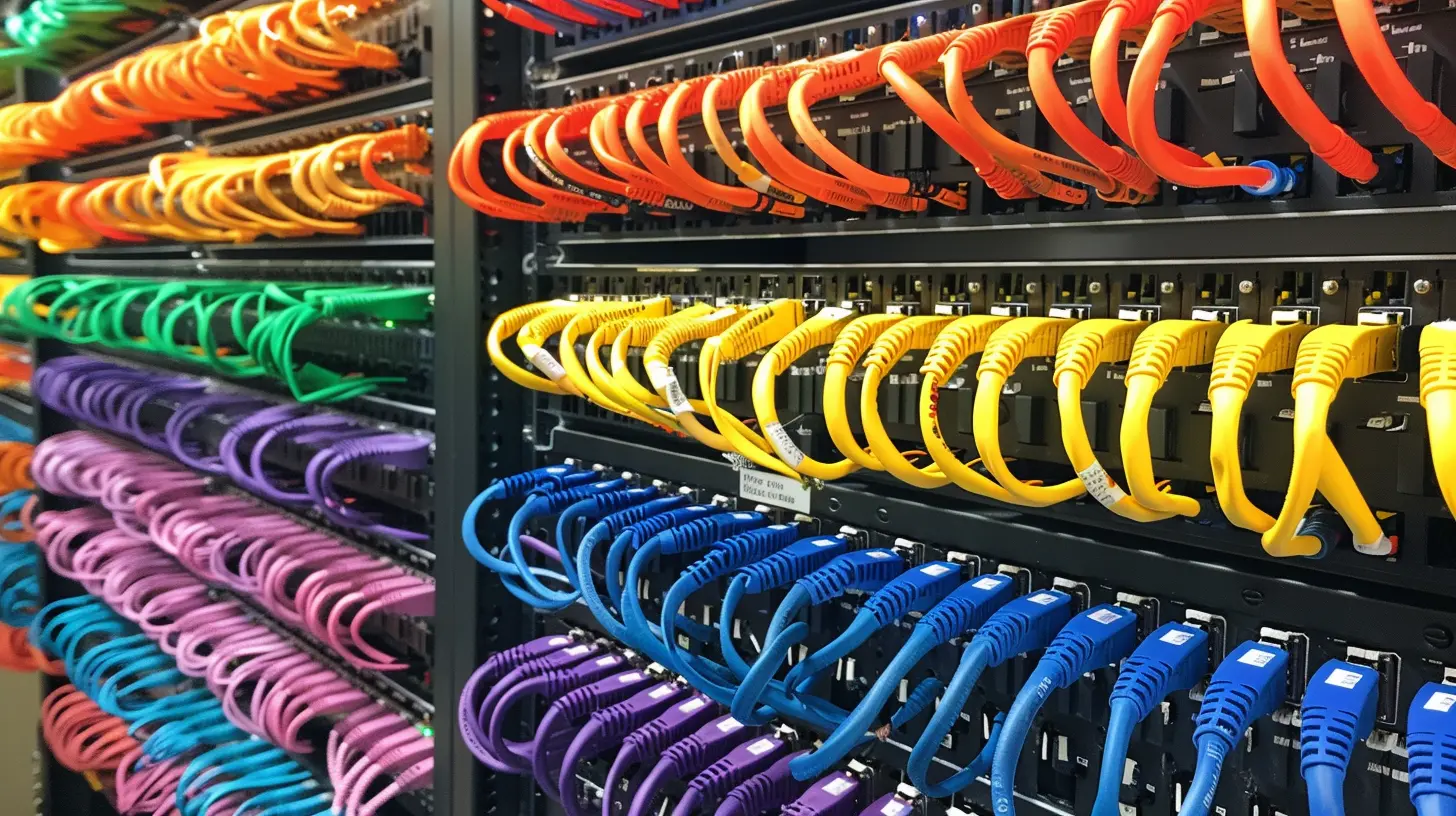Best Practices for Managing Network Devices in a Growing Office
1 June 2025
So, your office is expanding—more employees, more devices, and suddenly your network feels like it's running a marathon with its shoelaces tied together. Sound familiar? Managing network devices in a growing office isn't just about plugging in more routers and switches; it's about keeping things running smoothly, securely, and efficiently.
Let’s dive into the best practices for managing network devices in an office that's outgrowing its old ways. 
1. Establish a Solid Network Management Plan
Imagine running a restaurant without a menu—chaos, right? The same goes for your network. Before adding more devices, have a clear plan that outlines:- Current capacity – How many devices are connected now?
- Future needs – How many more will be added in six months? A year?
- Scalability – Can the existing network infrastructure handle growth without major overhauls?
A well-documented plan helps prevent bottlenecks, outages, and security loopholes as your office scales. 
2. Use Centralized Network Monitoring Tools
If you're managing network devices manually, you're effectively playing whack-a-mole with connectivity issues. Instead, use centralized network monitoring tools to:✔️ Track performance in real-time
✔️ Identify bottlenecks before they become problems
✔️ Monitor security threats
✔️ Generate reports for better decision-making
Some great tools for this include PRTG Network Monitor, SolarWinds, and Nagios. These tools simplify network management, giving you a birds-eye view of your entire infrastructure. 
3. Implement Network Segmentation
Think of network segmentation like dividing a busy city into districts—it keeps things organized and prevents unnecessary congestion.Instead of one large, flat network, break it down into segments like:
- Guest network – So visitors don’t have access to sensitive files
- HR & Finance – Keeps confidential data secure
- Operations & IT – For handling internal systems
- IoT & Devices – Separating printers, VoIP phones, and smart devices
Segmentation enhances security and improves performance, ensuring that a single outage or breach doesn’t bring down the entire network. 
4. Keep Firmware and Software Updated
Would you drive a car that hasn’t been serviced in years? No? Then why would you let your routers, firewalls, and switches run on outdated firmware?Regular updates:
✅ Patch security vulnerabilities
✅ Improve device performance
✅ Add new features
Set up automated updates where possible, and conduct manual reviews to ensure nothing is missed.
Pro Tip: Schedule updates during off-peak hours to avoid disrupting daily operations.
5. Enforce Strong Security Policies
As your office grows, so do cybersecurity risks. Protect your network with these must-have security measures:🔒 Use strong passwords – Ditch "123456" and use complex passphrases instead.
🔐 Enable multi-factor authentication (MFA) – Adds an extra layer of security.
🛡 Deploy firewalls & intrusion detection systems – Stops threats before they cause harm.
🔄 Regularly review user access – Remove old employee credentials ASAP!
A breach could cripple your operations, so don’t take shortcuts when it comes to security.
6. Stick to an IP Address Management Strategy
Without a proper IP address management (IPAM) system, assigning addresses manually is like trying to remember where you parked in a massive lot.What you should do:
✔️ Use DHCP for dynamic IP allocations – Automates the process.
✔️ Reserve static IPs for critical devices – Servers, printers, and key network hardware.
✔️ Document IP allocations – Avoid conflicts and confusion down the line.
Poor IP management can lead to network collisions, connectivity issues, and troubleshooting nightmares—so stay organized!
7. Standardize Your Equipment
Using different brands and models of routers, switches, and access points? That’s a recipe for compatibility issues. Try to standardize your equipment as much as possible.Benefits of standardization:
✅ Easier troubleshooting
✅ Consistent performance
✅ Faster replacements/upgrades
Choose reliable brands with good support, and avoid cheap, mismatched solutions that create more problems than they solve.
8. Plan for Redundancy & Failover Systems
Your office can’t afford downtime, so having backup plans in place is critical.- Redundant Internet connections – If one ISP fails, another kicks in.
- Backup power supplies (UPS) – Keeps devices running during power outages.
- Failover routers & switches – Ensures uninterrupted connectivity.
Even a few minutes of downtime can cost a business thousands—plan ahead!
9. Train Employees on Network Best Practices
Your network is only as strong as its weakest link, and sometimes, that weak link is an employee. Educate your staff on:👨💻 Safe browsing habits – No one should be clicking on suspicious links.
🔑 Password security – No sticky notes with passwords on desks!
📡 Connecting to the right networks – Avoid rogue or unauthorized Wi-Fi connections.
A little training goes a long way in preventing cyber threats and network misuse.
10. Conduct Regular Network Audits
Would you run a business without looking at your financial statements? No way! The same principle applies to your network.Conduct regular network audits to:
🔍 Identify unused or outdated devices.
📊 Assess network performance & capacity.
⚠️ Detect security risks before they become threats.
Use tools like Wireshark, Lansweeper, or NetFlow Analyzer to keep a close eye on network health.
11. Scale Your Network as Your Business Grows
Your network should grow with your business, not lag behind. Invest in scalable solutions like:📶 Mesh Wi-Fi systems – Expand coverage without rewiring.
🔀 Modular switches & routers – Add capacity easily.
☁️ Cloud-based network management – For flexibility and remote access.
Don’t wait until your network starts choking—plan ahead and expand proactively.
Final Thoughts
Managing network devices in a growing office doesn’t have to be overwhelming. By organizing, securing, and scaling your network smartly, you ensure smooth operations without constant headaches.Remember:
✅ Plan before you expand.
✅ Use automation & monitoring tools.
✅ Prioritize security and redundancy.
With these best practices, your network will be fast, reliable, and ready for growth—just like your business!
all images in this post were generated using AI tools
Category:
NetworkingAuthor:

John Peterson
Discussion
rate this article
3 comments
Zephyrwind Wilcox
Effective network management in growing offices requires regular updates, monitoring, and comprehensive documentation strategies.
June 13, 2025 at 3:23 AM

John Peterson
Absolutely! Regular updates and monitoring, along with thorough documentation, are key to ensuring optimal performance and security in a growing office network.
Rayna McLaughlin
Managing network devices in a growing office is like herding cats—if the cats were powered by Wi-Fi and had a tendency to hide under desks. Just remember: a good network is like a good coffee—strong and reliable!
June 2, 2025 at 4:05 AM

John Peterson
Thanks for the clever analogy! Indeed, a strong network is essential for keeping everything running smoothly in a busy office.
Annabelle Mahoney
Unseen connections weave the fabric of productivity. Are your network devices silently shaping your office's future, or are they ticking time bombs?
June 1, 2025 at 12:54 PM

John Peterson
Absolutely! Effective management of network devices is crucial—proper maintenance and monitoring can transform them from potential issues into powerful enablers of productivity.



